Search Papers
78 papers
CASE STUDY: APPLYING INFORMATION TECHNOLOGY IN TEACHING FIRST GRADE MATHEMATICS TO DEVELOP COMPREHENSIVE COMPETENCIES FOR PRIMARY SCHOOL STUDENTS
Chu Thi Ngoc Diep, Tran Thi Yen Giang, Pham Quynh Giang
This study evaluated the effectiveness of Information Technology (IT) applications in teaching Grade 1 mathematics to develop students' comprehensive competencies. Tools such as Canva, Twinkl, and online educational games were integrated into lessons to create an engaging learning environment and to enhance students' skills. Significant improvements were observed: students’ ability to sequence numbers increased from 33% to 83.3%, number comparison skills improved from 31% to 90.5%, and effective teamwork skills rose from 40% to 95.2%. Additionally, self-directed learning levels increased from 24% to 85.7%, and creativity in problem-solving grew from 33% to 80.9%. These results underscore the positive impact of IT in developing primary students' academic and collaborative skills.
IMPROVING THE QUALITY OF LAVABO PRODUCTS AT THIEN THANH BATHWARE COMPANY LIMITED
Pham Truong Huyen Mo, Nguyen Vuong Bang Tam
This study focuses on improving the quality of lavabo basin products at Thien Thanh Bathware Company Limited. by applying quality analysis tools such as process flowcharts, check sheets, Pareto charts, and cause-and-effect diagrams. The analysis identified two major defects affecting product quality: impurities and firing cracks. Based on root cause analysis, the study proposes three groups of solutions: (1) cross-training and standardized operation models to enhance workers’ skills; (2) periodic maintenance plans for the vibrating screen to ensure stable equipment performance; and (3) regular mold maintenance to detect early wear or damage. These solutions aim to improve product quality, reduce defect rates, and increase production efficiency.
OVERVIEW OF SUBMERGED CULTURE AND THE BIOLOGICAL ACTIVITIES OF MEDICINAL MUSHROOM SPECIES
Nguyen Thi Ngoc Nhi, Dang Thanh Trung
Submerged cultivation of medicinal mushrooms is receiving increasing attention and is considered an effective alternative to traditional substrate cultivation methods for producing fungal mycelial biomass and bioactive metabolites with diverse applications. This method allows for the control of culture environment conditions, enabling more efficient synthesis of bioactive compounds such as polysaccharides, triterpenoids, cordycepin, polyphenols, etc. Furthermore, the bioactivity of these compounds, including antioxidant, anticancer, antibacterial, and immunomodulatory effects, further emphasizes the potential of producing medicinal mushroom biomass by submerged cultivation in the pharmaceutical and functional food industries. Submerged cultivation is considered a promising alternative to traditional mushroom fruiting body cultivation because it offers better control over culture conditions and product quality, as well as shorter cultivation times. Submerged fungal cultivation has significant industrial potential; however, there are still challenges in optimizing production yield and scaling up the process for industrial application. The successful application of this method on a commercial scale depends on increasing product yield and developing new production systems to address the issues related to submerged mushroom cultivation techniques. Although many researchers are making efforts to produce bioactive metabolites from fungi, the physiological and technical aspects of submerged cultivation still require extensive and long-term research.
OVERVIEW OF MORPHOLOGY, DISTRIBUTION, CHEMICAL COMPOSITION, BIOLOGICAL ACTIVITIES AND CULTURE MEDIUM OF Xylaria nigripes
Nguyen Thi Ngoc Nhi, Tran Minh Trung
Xylaria nigripes is a rare medicinal mushroom in the Xylariaceae family, which has long been used in traditional medicine to aid in treating conditions such as insomnia, neurasthenia, and inflammation. This fungus usually grows in an environment characterized by termite nests. Recent studies have shown that X. nigripes contains many valuable biological compounds such as polysaccharides, nucleosides, and sterols, which provide important biological effects, such as antioxidants, liver protection, immune system regulation, and diabetes treatment. In addition to pharmacological potential, many research works have focused on developing X. nigripes biomass kernel techniques under artificial culture conditions, in order to optimize growth and accumulation of active ingredients. These results not only contribute to clarifying the application potential of this mushroom in the pharmaceutical field but also create a scientific foundation for the sustainable exploitation of this rare medicinal resource.
ARTIFICIAL INTELLIGENCE IN EFL TEACHING: TEACHERS’ READINESS AND ADOPTION INTENTIONS IN THU DAU MOT CITY, BINH DUONG PROVINCE
Tran Thi Le Thu
AI is transforming English as a Foreign Language (EFL) education by facilitating personalized learning and intelligent tutoring globally. This study examines the readiness and intentions of educators in Thu Dau Mot City, Vietnam, to adopt AI in their EFL classrooms. Through surveys and interviews with 102 teachers and lecturers, results show a high perceived usefulness and intention to integrate AI (M = 4.10). However, challenges remain with moderate ease of use (M = 3.92), low confidence in AI tools (M = 3.68), and limited institutional support (M = 3.45). Qualitative insights indicate a need for systematic training and collaborative environments. The findings emphasize that successful AI adoption relies on institutional investment in training and infrastructure. Without this support, the gap between enthusiasm and actual implementation may hinder AI's transformative potential. Policymakers and educational leaders need to create structured frameworks for effective AI integration in EFL classrooms.
BUILDING THE KHMER ETHNIC CADRE FORCE IN TRA VINH PROVINCE TO MEET TASK REQUIREMENTS IN THE NEW CONTEXT
Lam Ngoc Rang
Building a contingent of ethnic minority cadres has consistently been a guiding principle and strategic policy of the Communist Party of Vietnam throughout different revolutionary periods. Consequently, ethnic affairs in areas with ethnic minority populations have always received special attention from the Party and the State. Effectively carrying out this work ensures equality, solidarity, and shared development among ethnic groups across the nation. This article evaluates the current status of ethnic affairs and the Khmer ethnic cadre force in Tra Vinh province and proposes several solutions to enhance ethnic work and develop a contingent of ethnic cadres capable of meeting the demands of the new era.
DESIGNING DIGITAL GAMES FOR USE IN SECOND-GRADE MATHEMATICS EDUCATION
Ngo Hung Vuong, Nguyen Thi Quan Phung, Huynh Minh Thu
Digital transformation in education is an inevitable trend and has been increasingly promoted in Vietnam over the past few years. The application of digital games in mathematics instruction not only alleviates students’ stress and pressure but also fosters engagement and motivation in the learning process. This paper clarifies key concepts related to digital games as well as presents a set of principles and a design process for digital games using the web-based application Pink Cat Games. Based on a proposed four-step process, the paper illustrates the design of a digital game integrated with the mathematics curriculum for second grade. The findings of this research are to provide practical guidance for teachers in designing digital educational games, thereby augmenting the effectiveness of their pedagogical practices.
STUDY ON IMMOBILIZATION OF ENZYME ALPHA-AMYLASE IN TRADITIONAL ALCOHOL WINE FERMENTATION
Nguyen Bang Phi, Vo Thi Ngoc Han
Enzyme immobilization offers an innovative approach for reuse, preservation, and optimization of production efficiency and costs in the food and biofuel industries. In this study, amylase enzymes immobilized in Ca-alginate membranes were utilized in the fermentation of traditional sticky rice wine. The morphology and activity of immobilized amylase beads were maintained effectively at a 2% concentration of both carrier material and enzyme solution. After seven days of fermentation, fermentation efficiency reached an ethanol concentration of 55% v/v. The activity of immobilized amylase retained 60% of its activity after four consecutive fermentation cycles. These results suggest that immobilized amylase beads have promising applications in sticky rice wine production, replacing free amylase, which is difficult to recover and reuse.
Conductivity is a crucial and widely recognized concept in material science, particularly significant in the study of low-dimensional systems. This research extends the analysis of the conductivity tensor within a quantum well with infinite potential, focusing on electron-acoustic phonon scattering. The system is subjected to two external fields: an electromagnetic wave and a laser field. The study explores the detailed effects of these external fields, noting that significant impacts occur only at high frequencies. Among the factors affecting conductivity, the amplitude of the laser field is the most influential. Additionally, when the electromagnetic wave frequency exceeds 1012 s-1, its impact on conductivity becomes considerable.
OVERCOMING BARRIERS IN ENGLISH COMMUNICATION: INSIGHTS FROM NON-ENGLISH MAJORS AT THU DAU MOT UNIVERSITY
Nguyễn Thị Thanh Thương, Hồ Thị Trà My, Lê Đào Minh Thư, Hồ Trung Hậu
Effective English communication remains a significant challenge for non-English major students at many Vietnamese universities, often hindering their academic and professional development. This study explores the key difficulties faced by non-English majors at Thu Dau Mot University in English communication and their engagement in classroom speaking activities. Using a mixed-methods approach, the study collected data from 100 students through questionnaires and interviews.
The findings reveal four primary challenges: limited vocabulary, pronunciation difficulties, overreliance on the native language, and lack of confidence. These issues not only affect students’ ability to express themselves in English but also reduce their participation in classroom activities.
Despite these obstacles, the study found that active engagement in speaking activities positively impacts students’ learning outcomes, highlighting the importance of supportive and interactive teaching methods. Engagement varied, with students demonstrating greater participation in structured activities than in spontaneous speaking tasks.
Based on the findings, the study provides recommendations for fostering a more engaging and effective learning environment.
THE APPLYING OF KWL STRATEGY IN TEACHING WAVE OPTICS TO FIRST-YEAR ELECTRICAL ENGINEERING STUDENTS
Nguyen Phuong Duy Anh
In this study, the Wave Optics chapter, which is part of the General Physics A2 course for first-year Electrical Engineering students at Thu Dau Mot university, will be taught using the KWL (Know-Want to know-Learned) strategy. Creating a three-step KWL instructional process for four major Wave Optics chapter topics, creating learning scenarios that use the KWL strategy, and evaluating the technique's effects on students' critical thinking, active learning, and knowledge retention are all parts of the research objectives. Both qualitative and quantitative data analysis techniques are used in this study. Two classes were chosen at random: the experimental group (49 students) was taught using the KWL strategy, while the control group (49 students) followed a traditional instructional method. Data were collected through test scores, post-lesson surveys, and classroom observations. The findings show that the experimental group achieved an average score of 7.31, higher than the control group’s 6.13. Post-lesson surveys indicated that all 15 evaluation criteria reached a "Good" level, with mean scores ranging from 4.24 to 4.54. Students responded positively, expressing enjoyment in being able to ask questions, synthesize information, and engage more deeply in learning. The study confirms that the KWL technique is an effective teaching method that enhances instructional quality and promotes students’ active learning skills. This strategy holds potential for broader application across other STEM subjects to maximize learner-centered knowledge acquisition.
This study is aimed to get a thorough insight into the students’ beliefs as well as the effectiveness of the use of Direct Reading and Thinking Activity (DR-TA) in teaching and learning reading comprehension. The result, by that way, wishes to enhance better concurrence and implementation among teachers and educators. The subjects are 8 Pre-Intermediate non-English majored students at the Foreign Language Center- Institute of Foreign Language Training of Thu Dau Mot University. The instruments used are questionnaires, interviews and the scores of final tests.
REAL-TIME SORTING OF AGRICULTURAL PRODUCTS USING LABVIEW AND PLC INTEGRATION: A CASE STUDY ON TOMATOES
Nguyen Phuong Tra, Nguyen Anh Vu
The rising demand for automation in agriculture and manufacturing necessitates efficient, cost-effective sorting systems to replace labor-intensive manual processes. This paper introduces an innovative system integrating a Siemens S7-1200 Programmable Logic Controller (PLC), LabVIEW-based image processing, and OPC (OLE for Process Control) communication for automated tomato sorting. Utilizing real-time vision analysis, the system classifies tomatoes by color and size, offering a low-cost, scalable solution tailored for small-scale industries. A high-resolution camera captures images, processed in LabVIEW using HSV color space and size thresholds, with results relayed via OPC to the PLC, which actuates a stepper motor-driven sorting mechanism. Experimental validation in a controlled setting achieved 92% sorting accuracy and a throughput of 60 tomatoes per minute, surpassing manual sorting in speed and consistency. The modular design supports scalability to other agricultural products, enhancing its practical utility.
APPLICATION OF LINE BALANCING TECHNIQUE TO IMPROVE PRODUCTION EFFICIENCY AT THANH THANG LIMITED COMPANY
Nguyen Vuong Bang Tam
Waste in the production process causes waste of resources and resources while not creating real value, which is a major threat, reducing the competitiveness of enterprises. One of the measures that can both improve productivity and reduce costs effectively for enterprises is line balancing. Line balancing effectively maximizes idle time at stations, minimizes the number of workstations as well as uses fewer workers and equipment while still ensuring the company's production output and significantly increases production efficiency. The article focuses on the production line of Vancover Dining chair backrest clusters at Thanh Thang Limited Company. The actual production line still has some problems such as many stages of semi-finished products and too much idle time at some other stages. Therefore, the study proposes a method of rearranging the line in a U-shape to balance the production line to optimize the production process, but also from eliminating non-value-added activities. By reducing waste, enterprises not only save costs but also achieve increased output and shortened production time.
UTILIZATION OF HYDROXYAPATITE/CRAB SHELL CHITOSAN COMPOSITES IN REMOVAL OF AQUEOUS CONGO RED: INFLUENCE FACTORS, ADSORPTION KINETICS AND ISOTHERM
Nguyen Trung Hieu, Ha Tuan Anh
Due to the limitations of traditional adsorbents for dyeing wastewater, this study combined natural adsorbent (CS, chitosan) and hydroxyapatite (HAp) to form a composite for enhancing the adsorption of aqueous Congo red (CR). The chitosan was prepared from crab shells (Somanniathelphusa sinensis) with a deacetylation degree of about 89%. The HAp and HAp-CS composites were prepared by precipitation in high pH (~10) with the help of concentrated ammonia water (25%). The crab shell chitosan and chitin were characterized by the FTIR method, and the HAp and HAp-CS composites were analyzed using the SEM method. The CR adsorption experiments were carried out in batch form and sampled once for each condition. The results showed that the characteristic peaks in the FTIR spectrum confirmed the success of the crab shell chitosan preparation. The HAp and HAp-CS composites possess porous structures and seem to have a high surface area. The CR adsorptions reached optimal after 5-15 min. contacting, the adsorption efficiency tended to decrease with the initial concentration of CR and increase with the adsorbent dosage. The initial pH of the solution affected the adsorption efficiency for the 70%HAp-CS and 30%HAp-CS composites but had almost no effect on the adsorption capacity of 0%HAp-CS and 50%HAp-CS. The 50%HAp-CS composite had the best adsorption capacity among the synthesized composites (qmax = 769.2mg/g). The adsorption isotherm and kinetics best fit the Langmuir isotherm and pseudo-second-order kinetics model.
ROLE OF RESISTANT STARCH FOR HEALTHY AND FOOD APPLICATION
Nguyen Thi Bich Tram
Resistant starch (RS) is an insoluble fibre stable under various food processing conditions, including high temperatures and pH levels. RS has many beneficial effects on human health, such as positive effects on digestive tract activity, microflora, blood cholesterol levels, glycemic index, diabetes control, increased satiety and effective weight loss. Recently, RS has emerged as a comprehensive health improvement solution. This report helps to clarify the basis of the effects and applications of this type of starch.
DISEASE KNOWLEDGE, PERCEIVED SUSCEPTIBILITY AND COMPLIANCE BEHAVIORS ON POST-KIDNEY TRANSPLANT REGIMEN AMONG ADULTS RESIDENTS OF HO CHI MINH CITY, VIETNAM
Pham Minh Son, Joanna S. De Guzman
The study aimed to evaluate disease knowledge, perceived susceptibility and compliance behaviors of post-kidney transplant patients as well as assess relationship between disease knowledge, perceived susceptibility and compliance behaviors. A descriptive cross-sectional study conducted on 153 post-kidney transplant patients from March to June 2024 at Outpatient Department of Cho Ray hospital. The result showed that the majority of respondents have a lack of knowledge regarding medication and lifestyle change post kidney transplantation. While perceived susceptibility of respondents were at a fair level. Majority of respondents has a low level of perception regarding barriers to adherence and susceptibility to transplant rejection, while they have a good level of perception regarding benefits of adherence to treatment with immunosuppressive medication. Compliance behavior of post kidney transplant adults was at a good level. Majority of respondents had good compliance behavior regarding medication, while exercise and psychological adaptation was the lowest level of compliance behavior. There are positive relationships between Compliance behaviors and disease knowledge (r = 0.49, p < 0.001); perceived susceptibility (r = 0.45, p < 0.001) and perceived susceptibility plays a partial mediating role between knowledge and compliance behaviors and the mediating effect accounted for 31% of the total effect of disease knowledge on compliance behavior. The study also indicated that educational level (ꞵ = 0.93, p = 0.020), duration of transplant (ꞵ = 0.20, p = 0.012) are predictive factors of compliance behavior among post – kidney transplant patients. Educational interventions targeting both knowledge and health beliefs, particularly for older individuals, could improve adherence to treatment and overall health outcomes.
INHIBITORY ACTIVITY AGAINST ALLERGIC RESPONSES AND PHARMACEUTICAL PROPERTIES OF MEMBERS OF PHYLLANTHUS GENUS
Dai Hung Ngo
Phyllanthus (Euphorbiaceae) is widely distributed in tropical and subtropical areas, including Vietnam, where it is considered a valuable medicinal herb. Numerous bioactive compounds from Phyllanthus species have been identified, demonstrating pharmacological effects such as antiallergic, anti-inflammatory, antioxidant, antidiabetic, anticancer, antiviral, antibacterial, antimalarial, and wound healing activities. This review provides a comprehensive summary of Phyllanthus genus and its pharmaceutical properties, emphasizing the methodologies used for bioactive compound extraction and evaluation, as well as their clinical relevance.
ENHANCING SOLAR POWER EFFICIENCY: A COMPARISON OF MPPT TECHNIQUES FOR GRID-TIED PV SYSTEMS
Pham Hong Thanh, Nguyen Phuong Tra
This research investigates the effectiveness of three Maximum Power Point Tracking (MPPT) algorithms—Incremental Conductance (IC), Perturb and Observe (P&O), and Fuzzy Logic Controller (FLC)—in optimizing power output in grid-tied photovoltaic (PV) systems. Each algorithm was tested under varying environmental conditions, focusing on performance in terms of energy extraction, stability, and adaptability to fluctuating irradiance and temperature. Results indicate that FLC offers superior performance, exhibiting reduced power fluctuations and faster responsiveness to environmental changes compared to IC and P&O. These insights contribute to enhancing PV system efficiency and reliability in modern power grids.
THE EFFECT OF IMMOBILIZED YEAST CELLS IN CA-ALGINATE ON ETHANOL FERMENTATION OF DRAGON FRUIT (HYLOCEREUS COSTARICENSIS)
Nguyen Bang Phi, Nguyen Cam Le
Dragon fruit-based wine is a value-added product that enhances the value of domestic agricultural products, especially for those facing challenges in raw form export. In this study, Saccharomyces cerevisiae yeast cells were immobilized using the Ca-alginate carrier for assessing the influence of Na-alginate and CaCl2 concentrations on the quality of immobilized Ca-alginate beads during wine fermentation. A repeated fermentation study was conducted to determine the efficiency and stability of immobilized beads in dragon fruit-based wine fermentation. The results indicated that the immobilized Ca-alginate beads exhibited good fermentation efficiency with 3% Na-alginate and 2% CaCl2 concentrations. Moreover, the fermentation efficiency was maintained through at least four fermentation cycles. The immobilized yeast cells contributed to the production of wine with favorable qualities in terms of color and taste, meeting the standards in laboratory-scale TCVN 3215-79. These findings underscore the potential of cell immobilization technology using Ca-alginate carriers in the fermentation process of dragon fruit- based wine. This technology significantly enhances the value and diversifies the range of Vietnamese agricultural products, mainly dragon fruit
LIQUID LEVEL STABILIZATION USING FUZZY ALGORITHM WITH PLC S7 1200
Nguyen Thanh Doan, Pham Hong Thanh
This paper presents a method for liquid level stabilization using a fuzzy logic algorithm implemented on the PLC S7-1200. Maintaining liquid levels accurately is a critical requirement in various industrial processes to ensure safety, efficiency, and consistent product quality. The proposed approach employs fuzzy logic to manage the inherent nonlinearities and uncertainties in the system, providing robust control performance under varying operating conditions. The fuzzy controller is designed with rules and membership functions tailored to the dynamic characteristics of the liquid level system. The control logic is programmed and deployed on the Siemens PLC S7-1200, a widely used industrial automation device. Experimental results demonstrate that the fuzzy logic controller effectively stabilizes the liquid level, achieving better performance compared to traditional PID controllers in terms of response time, overshoot, and steady-state error. This study highlights the potential of integrating fuzzy logic with PLCs for advanced industrial automation applications.
AN OPTIMAL CURRICULUM FOR TEACHING ENGLISH TO ATHLETES
Elena Yakovleva
Athletes often need to have good English skills to communicate with foreigners for different purposes. As known, many athletes are not able to speak English fluently. To enhance the national athletes’ English proficiency, the governmental institutions arrange various English courses for them. This study reflects the long-term (over seven years) teaching process of English to the athletes in terms of the English course content, namely General English and Sports English, topics, local teacher vs foreign teacher, teaching methods, evaluation criteria, implementation of visual means and AI. The study results are based on the teachers’ observational method and students’ feedback.
Most students liked the English course because they could speak English through discussions and conversations and learn new vocabulary, including General English and Sports English (ESP). The students liked the lessons’ topics (e.g. hotel/restaurant reservation, shopping, ordering food, and sports injuries) which were usually taught using PPTs, handouts, Youtube, and Kahoot. AI as ChatGPT, Perplexity, Grammarly, Alexa, etc. was recently implemented in the teaching of athletes as well, facilitating the teaching and learning process and making it more effective and fun. Most athlete students were satisfied to have both a local and foreign teacher for the former could provide explanations in Chinese and the latter could help them to overcome the language barrier and gain confidence in speaking English. Most of the athlete students were motivated to improve their English to communicate internationally.
CHALCONE DERIVATIVES AS POTENTIAL SARS-COV-2 INHIBITORS: A VIRTUAL SCREENING STUDY ON THE PAPAIN-LIKE PROTEASE ENZYME (PLPRO)
Nguyen Thi Thanh Thao, Nguyen Thi Phuong Truc
The papain-like protease (PLPro) is a highly conserved, non-structural protein that plays a crucial role in the formation of the replication-transcription complex and the processing of polyproteins in SARS-CoV-2, as well as improving the host’s antiviral immune responses against said virus. Chalcone is a common ingredient, which can be found in a multitude of natural substances, such as food and herbs. It has been proven to have various biological activities, including antiviral effects. Previous studies have identified several natural chalcone-based compounds with the ability to inhibit SARS-CoV-2 by targeting the PLPro enzyme. Based on these findings, this study investigated potential chalcone-derived PLPro inhibitors, as retrieved from Pubchem and in-house libraries. Virtual screening protocols, specifically molecular docking and molecular dynamics simulating filter, were applied to reach the desired goal. As a result, 1448 out of 1454 chalcone derivatives can effectively bind to SARS-CoV-2 via PLPro. The 5 substances with the most suitable docking score and binding mode were selected for the next step. Through MD, CID1021201513 and CID101585417 showed the greatest potential in targeting PLPro. However, further in vitro and in vivo studies must be conducted before the bio-activities of these chalcones against SARS-CoV-2 can be confirmed. Furthermore, the ligand-protein interaction mode analysed in this research can help design effective chalcone derivatives.
SURVEY AND EVALUATION OF DOMESTIC WASTEWATER TREATMENT SYSTEM AT THU DAU MOT CITY, BINH DUONG
Huynh The An, Nguyen Dinh Tuong
This study focused on the wastewater treatment system in Thu Dau Mot City, Binh Duong, aiming to assess its operational effectiveness. The research was carried out over a period of six weeks, with data collected at regular intervals during the 1st, 2nd, 3rd, 4th, 5th, and 6th weeks. The results demonstrate that the treatment process is highly efficient, achieving impressive removal rates across multiple parameters. Specifically, the average treatment efficiency for color was 93.10%, TSS (total suspended solids) was 98.62%, COD (chemical oxygen demand) reached 93.24%, BOD5 (biochemical oxygen demand) was 99.28%, NH4+ (ammonium) removal was 99.16%, while total nitrogen and total phosphorus were treated at 87.80% and 86.57%, respectively. Notably, the system exhibited the highest performance in coliform removal, with an actual treatment efficiency of 99.62%.
Publication Information
Publisher
Thu Dau Mot University, Viet Nam
Editor-in-Chief

Assoc. Prof. Nguyen Van Hiep
Thu Dau Mot University
Thu Dau Mot University
Editorial Board
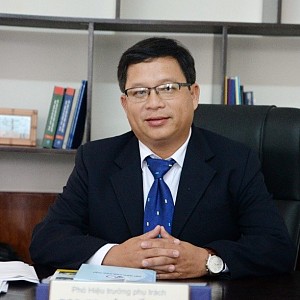
Assoc. Prof. Le Tuan Anh
Thu Dau Mot University
Thu Dau Mot University

PhD. Nguyen Quoc Cuong
Thu Dau Mot University
Thu Dau Mot University

PhD. Doan Ngoc Xuan
Thu Dau Mot University
Thu Dau Mot University

PhD. Nguyen Khoa Truong An
Thu Dau Mot University
Thu Dau Mot University

Assoc. Prof. Nguyen Thanh Binh
Thu Dau Mot University
Thu Dau Mot University

PhD. Le Thi Thuy Dung
Thu Dau Mot University
Thu Dau Mot University

PhD. Ngo Hong Diep
Thu Dau Mot University
Thu Dau Mot University
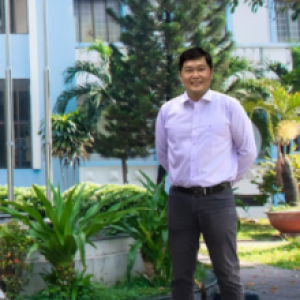
PhD. Nguyen Duc Dat Duc
Ho Chi Minh City University of Industry and Trade
Ho Chi Minh City University of Industry and Trade

Assoc. Prof. Nguyen Van Duc
Animal Husbandry Association of Vietnam
Animal Husbandry Association of Vietnam

PhD. Nguyen Thi Nhat Hang
Department of Education and Training of Binh Duong Province
Department of Education and Training of Binh Duong Province

PhD. Nguyen Thi Cam Le
Vietnam Aviation Academy
Vietnam Aviation Academy

PhD. Trần Hạnh Minh Phương
Thu Dau Mot University
Thu Dau Mot University
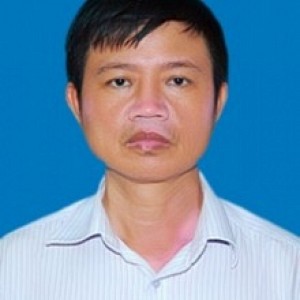
M.A. Pham Van Thinh
Thu Dau Mot University
Thu Dau Mot University

PhD. Nguyen Thi Lien Thuong
Thu Dau Mot University
Thu Dau Mot University
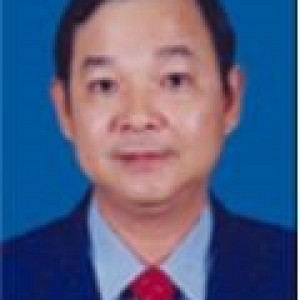
Prof. Le Quang Tri
Can Tho University
Can Tho University
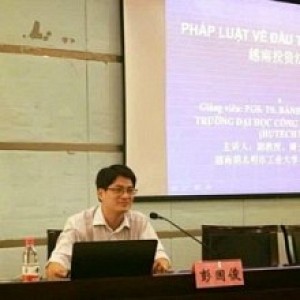
Prof. Banh Quoc Tuan
Thu Dau Mot University
Thu Dau Mot University

